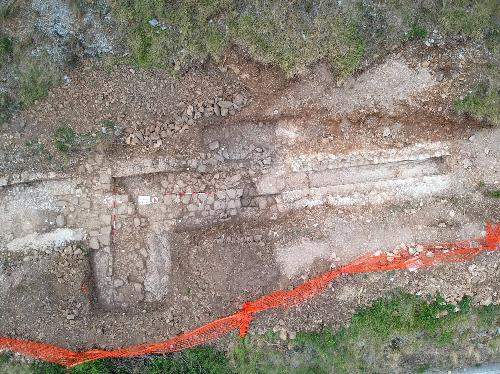Trieste, discovered a section of the Roman aqueduct that brought water to the city
In San Dorligo della Valle (Trieste), new restorations of the Roman aqueduct in the Rosandra Valley have brought to light a new section of the Roman structure.In April, in fact, investigations by archaeologists continued in the hamlet of Bagnoli Superiore, which were necessary to prepare for the work of securing the rocky slope above the road to central Bagnoli. The restoration work was carried out by the company ArcheoTest S.r.l. under the direction of Paola Ventura, archaeological officer for the Friuli-Venezia Giulia Superintendence of Archaeology, Fine Arts and Landscape, commissioned by the Municipality of San Dorligo della Valle.
The aqueduct, dating back to the mid-1st century AD, in ancient times carried the waters of the Rosandra stream from the Oppia spring to Trieste (then called Tergeste), following a 17-kilometer-long route. It stopped performing its functions in the Middle Ages.
The resurfaced section was discovered under a layer of soil, and is almost 100 meters long. This is the first time that such a long segment of the aqueduct has been scientifically investigated (although other sections of the structure had already been discovered in the past: some of them, moreover, were left exposed, such as the one in the Val Rosandra Reserve or the one in the Antiquarium of Borgo San Sergio in Trieste). It is in an excellent state of preservation, a circumstance that has made it possible to acquire a great deal of information about this important hydraulic artifact: as far as the new section is concerned, it is understood that in the Middle Ages it was used as a foundation for the construction of a building.
This last discovery is definitely relevant because the discovery of a building that was inserted transversely to the canalization work is a novelty with regard to the phenomena of reuse of this structure: for the construction of the building, the abutments had been demolished and the bottom of the ancient structure had been exploited. Scholars recognized a single compartment (measuring 5 by 4.50 meters, at least in the dimensions that have been preserved), with rounded cobblestone masonry, without a binder, and a rounded stone floor: the compartment was accessed by a step, because it was located at a lower level than the outside. This building (of which a probable access route was also recognized, as well as a hearth base) is thought to date from the last quarter of the 14th century: the dating was obtained by analyzing fragments of fire pottery found in the building. On the other hand, it is not known what the intended use of the building was: it was certainly not a residential building, but more likely a control post of the local road system, connected to the Moccò castle located just above. According to another hypothesis, it could instead be a factory connected to the numerous mills that abounded along the Rosandra stream in the Middle Ages.
Restoration work, which began last year, will resume on May 11.
Pictured below: an image of the excavation of the Rosandra Valley Aqueduct.
 |
| Trieste, discovered a section of the Roman aqueduct that brought water to the city |
Warning: the translation into English of the original Italian article was created using automatic tools. We undertake to review all articles, but we do not guarantee the total absence of inaccuracies in the translation due to the program. You can find the original by clicking on the ITA button. If you find any mistake,please contact us.




























